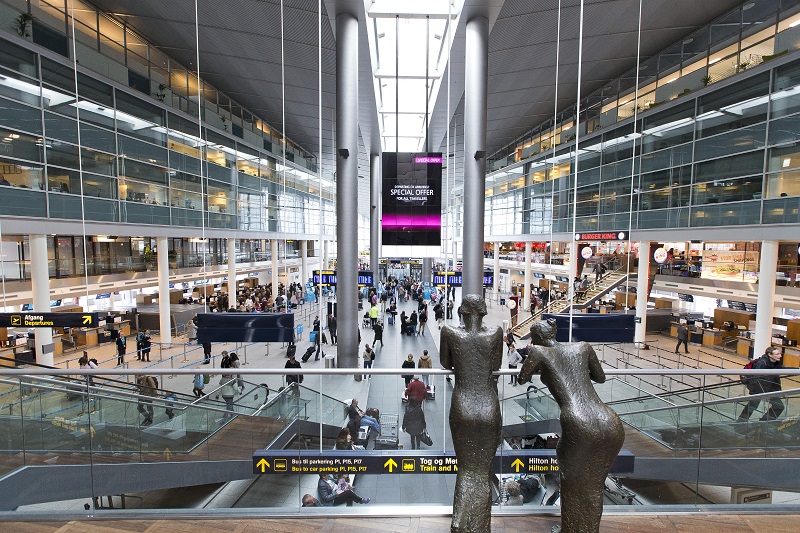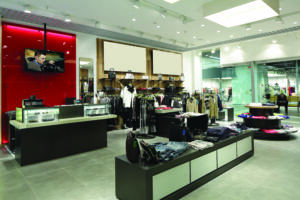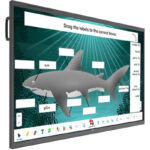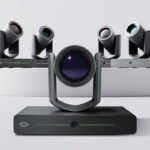As we continue to rebound from the global impacts of the last few years, the world is seeing a resurgence of live events and sports. The resurgence is backed by spending reports as a 2023 McKinsey & Company Consumer Pulse Survey shows a 7% year-over-year growth on out-of-home entertainment. You only need to look at the amount of money spent on Super Bowl tickets or Taylor Swift’s sold-out Eras tour to see just how eager people are to return to events. However, this has put a lot of pressure on live venues, stadiums and experience centers to give the best it can possibly give.
The definition of “best” has changed, with new needs — accessibility, equity and inclusivity — and expectations for immersive technology underscoring the importance and necessity of innovation. In order to understand where event technology is today and where it needs to go, we need to look at the customer journey and ask questions along the way.
Attracting Customers with Digital Signage
The first step in creating a successful event is to bring people inside the venue. It’s not uncommon to deploy digital signage to attract people. The Las Vegas Sphere and Allegiant Stadium are both great examples of leveraging striking and innovative technology to draw customers in. If it seems odd that organizations would spend so much on something that isn’t part of the in-venue experience, remember that they are competing for people to come in and spend their money at their venue rather than somewhere else. And, in Vegas, and other big entertainment cities and areas, there’s a lot of competition. From a visual perspective, this takes a lot of responsibility and ingenuity that asks how can we get guests excited to come here?
Technology Battles the Bottleneck
Once customers have decided where they’re going to spend their money, it’s time to get them inside, through security and ticketing. This process can create a frustrating bottleneck that makes apparent how a shortage of staff — an ongoing problem plaguing all sectors — can impact the experience.
The second hurdle to overcome in providing an exceptional experience is ticketing. According to the Better Business Bureau, ticket fraud has skyrocketed with the agency processing nearly 21,000 complaints for fraudulent tickets since January 2022, following the return to live events. Venue and event management are doubling up their efforts to prevent scammers, which can add time to the ticket scanning process.
Here, venue management and manufacturers have to ask themselves: How do we make the security and ticketing scanning experience safe, easy and fast? Some venues are starting to rely on technology and use data analytics to improve the experience. This is absolutely an area where, with the right hardware and software technologies, you can improve the experience and re-allocate available staff in other areas.
Once the customer is in, one of the first stops they’ll make is to concessions. Food and beverage vendors are no different than a quick serve restaurant (QSR). Typically, they have many menu boards that they need to maintain and update with consistency from location to location inside the venue. The content is often tied into the food inventory management system to support real-time updates of product availability.
The addition of self-serve kiosks streamlines ordering and helps move lines of people through quickly during peak times like half-time or the seventh inning stretch. With regard to venue concessions, we should consider how can we use technology to improve the ordering experience for all guests.
More Questions, More Digital Signage
The question that keeps venue owners up at night is how can they provide every single person in that stadium, no matter what seat they’re in, an exceptional experience? How do we engage people so that they like the experience of being there as much as or more than they like the event itself? How can we keep kids entertained? And how do we make the people in the nosebleed seats feel like they are still having an experience that’s much better than sitting at home in front of the TV? That’s a big challenge for a lot of venues.
Technology plays a key part. SoFi Stadium has set a precedent of experience that other stadiums are challenged to meet or exceed. From the canopy embedded with LEDs to the 360-degree, dual-sided mega screen, there’s no shortage of wow factors. SoFi also is the first major venue in the US to leverage digital twin technology; using data to optimize the guest experience and building on past events to improve future ones.
As venue owners face increasing costs of materials and labor, compounded by dated venues that do not have the infrastructure necessary to support technology of today, they are challenged to create a solution that will deliver an unforgettable experience without a complete overhaul or ground-up construction.
Examples of Innovation
There have been some monumental designs and deployments paving the way for upgrades. At Lucas Oil Stadium in Indianapolis, an LED floor was deployed for the NBA All-Star Game. The LED court is the first of its kind: it uses LEDs from ASB GlassFloor to show graphics and video content right on the basketball court.
Additionally, stadium designs for the Oakland Athletics Major League Baseball team includes a 18,000-square-foot screen for scores, stats and replays, It would be the largest LED screen in North American professional baseball, beating out 17,400-square-feet one at Citi Field in New York. Meanwhile, a ground-up new stadium for the New York City FC currently shows what is called The Cube, a seven-story LED entry way, along with additional screens throughout the facility. It seems that each facility has designed at least one wow-factor to drive guest experience in their venue.
Another great innovation is at the Detroit airport where Delta has deployed a screen for boarding information, called PARALLEL REALITY. Rather than sifting through rows and rows of other flights, it shows the viewer only their personalized flight information while showing other passengers their flight information. It’s almost like looking at a lenticular printed image, where the image shifts based on your perspective. It can display info for up to 100 people at a time, all on a single screen that’s no bigger than previous flight boards. When we consider equity of experience across all people, regardless of how tech-savvy they are, this is the type of application that can level the playing field.
One of the more engaging applications is live social integration…for a “nominal” fee. Should you find yourself in Manhattan, you can download the TSX app, schedule a personal video and for just $40, you can have your content shared on an 18,000-square-foot-billboard in Times Square for 15 seconds. Don’t worry, TSX leverages AI and humans to review all content before approving. It’s a kiss cam on steroids and rethinks Times Square advertising real estate. This gives viewers a cool experience where their 15 seconds of fame is guaranteed to be viewed by tens of thousands of people. This is the future of engagement that also helps companies gather insight from their power users.
Barriers to Innovation
These deployments solve problems and raise the bar, providing a personalized experience by integrating many kinds of technology — digital signage, data, networking and more. They pave the way for live events going forward and give customers a way to get to see what they want to see. They were created by thinking outside the box; solving a problem we didn’t yet realize, creating an environment we didn’t know possible, all while addressing the needs of those most impacted. In this industry, we’ve been putting LCD walls in gymnasiums for years, but ASB GlassFloor thought outside the box when it created its sports flooring. In addition to its visual benefits2, it is said to give athletes enhanced performance and safety and increased durability. By addressing the impact on the athletes, ASB removed the most impactful barrier they would face.
As we start mapping out what’s possible, we need to consider the network requirements. Adding hundreds of displays, media players and other devices can be a major draw from an existing network. Beyond the devices deployed, we must consider the number of mobile devices added to the network; it’s safe to assume that it’s a 1:1 ratio of guest to device. Imagine offering a live social integration opportunity that overwhelms the network, rendering guest’s devices useless. Having the infrastructure in place to support the influx of mobile devices on the network can play a major part in the experience of a guest.
Another consideration is providing remote management to reduce the onsite support required for potential technology outages during an event. Implementing networked solutions are often a barrier, as most environments don’t want any external access to their systems. Certainly, the pandemic exposed the security risks one faces with today’s systems, many of which have yet to be updated with new technology. For organizations with security and networking personnel onsite, this is less of a challenge, but there’s still the concern of something going down during a game or event. How do you get ahead of potential failures or outages? What does the serviceability look like? Who’s the person who’s lying awake at night if a display goes down or an LED goes out?
These are the considerations our industry technologists should address with their clients. By deploying solutions that can identify issues before they impact an event, they are maximizing their investment. Solutions available today can provide real-time data so hardware can be replaced in advance of failures. That’s the future of serviceability — you catch it before it’s an issue.
Inclusivity and Digital Signage
An often forgotten but ever-important consideration when deploying technology is addressing inclusivity. Are you meeting a broad audience need or only a target market? Nearly a quarter of our population is aging. They might not be using the latest device or even own a mobile device for an e-ticket or mobile ordering in a QSR.
Likewise, is the interactive display programmed for those that are differently abled? What about potential language barriers for guests who are more comfortable interacting in their native language? What a great experience that would be, for example, for people who are going to see a Spanish singer who is coming to the U.S. to perform at Madison Square Garden, for the integrated technology to support their language preference.
While there are gaps in digital signage technology that need to be driven by equity; the cost of inclusivity is easily overcome if you consider the expansion of your target market.
Digital signage can be a tool to improve operational excellence and we’re hungry for it. If we take a step back and map out a customer’s journey prior to designing solutions, we can solve for unforeseen issues, bottlenecks and staff shortages. As venues seek to become much more tech forward and accessible, understanding how various audiences leverage a space can help ensure technology becomes a tool rather than a barrier.
Data analytics can help in this area. We can learn from the technology we’re implementing today on how to make it better going forward, which will help us integrate with equity of experience top of mind. If there’s certain users that aren’t comfortable with what we’ve implemented, that’s a measurement on the customer journey.
We can do the all the pre-work and think we understand what our customers want, but the data analytics help either prove or poke holes in what we believed to be the case, which is really important not only from an experience side for the customer, but also from an investment perspective. How companies spend money going forward will depend on what the analytics tell them.
The Future of Entertainment
In general, society just wants to go back to having fun. Statistics have revealed we’re under more stress, and the spend that’s happening in entertainment and sports venues is very telling. People seek experiences rather than stuff. Display-driven venues are just the tip of the iceberg of what could happen in these spaces so long as we do it in a way that is considering equity. We have a large number of people, the boomer generation, already retired or set to retire, who will be in these entertainment spaces more so than others.
Therefore, considering their needs is really important, and an opportunity for a lot of these brands to put their CSR, equity or sustainability initiatives at the forefront instead of in the background. Because the customer journey is about each and every person’s experience. And isn’t that what this industry is all about?
Michelle Montazeri serves as director, digital signage for Legrand | AV. She can be reached at [email protected].













